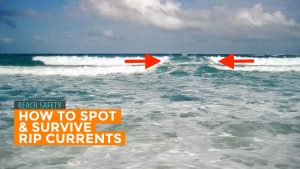Swimming in New England is something that many of us grew up as a child doing. As a New Englander we live for these 3 summer months. Because really what spring, fall, and winter give us really is always a mystery. Sometimes we get summer in spring and other times we get spring in the winter. But summer is always guaranteed.
 This summer has been a first me when it comes to swimming pools and at the beach. I now have my two children (5 and 2) swimming in friends pools and that love to go to the beach. I watch them like a hawk and swimming safety is my number one priority but also want them to have fun.
This summer has been a first me when it comes to swimming pools and at the beach. I now have my two children (5 and 2) swimming in friends pools and that love to go to the beach. I watch them like a hawk and swimming safety is my number one priority but also want them to have fun.
Turning the news on in the summer time is sometimes heartbreaking. So many accidents that involve pools or kids on the beaches or in ponds happens all to much. Lets review pool and beach safety tips to help keep your kids and even adults as safe as possible this summer.
Swimming in a Pool – Home Pool Safety Tips
If you are a home owner with a pool you need to establish rules regarding swimming at your residence. According the Red Cross typically almost 200 young children drown every year in backyard pools. You may come off harsh in the beginning but its for everyones safety. The Red Cross has come up with these rules that are a great starting point to enforce at your home.
- Secure your pool with appropriate barriers. Completely surround your pool with a 4-feet high fence or barrier with a self-closing, self-latching gate. Place a safety cover on the pool or hot tub when not in use and remove any ladders or steps used for access. Consider installing a pool alarm that goes off if anyone enters the pool.
- Keep children under active supervision at all times. Stay in arm’s reach of
 young kids. Designate a responsible person to watch the water when people are in the pool—never allow anyone to swim alone. Have young or inexperienced swimmers wear a U.S. Coast Guard-approved life jacket.
young kids. Designate a responsible person to watch the water when people are in the pool—never allow anyone to swim alone. Have young or inexperienced swimmers wear a U.S. Coast Guard-approved life jacket. - Ensure everyone in the home knows how to swim well by enrolling them in age-appropriate water orientation and learn-to-swim courses from the Red Cross.
- Keep your pool or hot tub water clean and clear. Maintain proper chemical levels, circulation and filtration. Regularly test and adjust the chemical levels to minimize the risk of earaches, rashes or more serious diseases.
- Establish and enforce rules and safe behaviors, such as “no diving,” “stay away from drain covers,” “swim with a buddy” and “walk please.”
- Ensure everyone in the home knows how to respond to aquatic emergencies by having appropriate safety equipment and taking water safety, first aid and CPR courses from the Red Cross.
Swimming at the Beach – Beach Safety Tips
Living here on the North Shore we have 100’s of beaches in almost every town that we can enjoy. Regardless of how often you get to sink your toes into the sand, the American Red Cross has some beach safety tips and steps you can take to be make sure you and your family remain safe.
Ocean Safety
 Swimming in the ocean takes different skills, so before you get your feet wet, it’s best to learn how to swim in the surf. You should also swim only at a lifeguard-protected beach, within the designated swimming area. Obey all instructions and orders from lifeguards.
Swimming in the ocean takes different skills, so before you get your feet wet, it’s best to learn how to swim in the surf. You should also swim only at a lifeguard-protected beach, within the designated swimming area. Obey all instructions and orders from lifeguards.
While you’re enjoying the water, keep alert and check the local weather conditions. Make sure you swim sober and that you never swim alone. And even if you’re confident in your swimming skills, make sure you have enough energy to swim back to shore.
Other beach safety tips to keep in mind:
- Have young children or inexperienced swimmers wear U.S. Coast Guard-approved life jackets in and the around water. No one should use any other type of floatation device unless they are able to swim.
- Don’t dive headfirst—protect your neck. Check for depth and obstructions before diving, and go in feet first the first time.
- Pay especially close attention to children and elderly persons when at the beach. Even in shallow water, wave action can cause a loss of footing.
- Keep a lookout for aquatic life. Water plants and animals may be dangerous. Avoid patches of plants. Leave animals alone.
Rip Currents
Rip currents are responsible for deaths on our nation’s beaches every year, and for most of the rescues performed by lifeguards. Beachgoers should be aware of how dangerous rip currents are, and swim only at beaches with lifeguards in the designated swimming area. Rip currents can form in any large open water area, such as low spots and breaks in sandbars, or near structures such as jetties and piers.
For your safety, be aware of the danger of rip currents and remember the following:
- If you are caught in a rip current, stay calm and don’t fight the current.
- Swim parallel to the shore until you are out of the current. Once you are free, turn and swim toward shore.
- If you can’t swim to the shore, float or tread water until you are free of the
 rip current and then head toward shore.
rip current and then head toward shore. - If you feel you can’t make it to the shore, draw attention to yourself by waving and calling for help.
- Stay at least 100 feet away from piers and jetties. Permanent rip currents often exist near these structures.
- If someone is in trouble in the water, get help from a lifeguard. If a lifeguard is not available, have someone call 9-1-1.Throw the victim something that floats – a lifejacket, cooler, inflatable ball and yell instructions on how to escape the current.
- When at the beach, check conditions before entering the water. Check to see if any warning flags are up or ask a lifeguard about water conditions, beach conditions, or any potential hazards.
Use all these tips that the Red Cross provides and apply them to your swimming wether it is in a pool, beach, or pond this summer. I know that after reviewing everything that I mentioned above my kids and I will continue to have a fun and safe summer along the water!

 young kids. Designate a responsible person to watch the water when people are in the pool—never allow anyone to swim alone. Have young or inexperienced swimmers wear a U.S. Coast Guard-approved life jacket.
young kids. Designate a responsible person to watch the water when people are in the pool—never allow anyone to swim alone. Have young or inexperienced swimmers wear a U.S. Coast Guard-approved life jacket. rip current and then head toward shore.
rip current and then head toward shore.